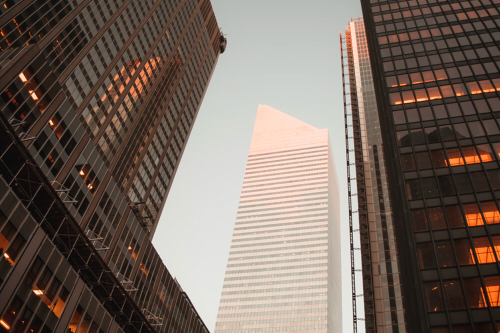Investors to Corporate America: You’ve Got a Debt Problem
Matt Egan
It’s getting awfully difficult for investors to ignore Corporate America’s mountain of debt.
Fears of an economic slowdown – or even recession – have turned a spotlight on the debt that businesses piled up during the past decade, when borrowing costs were historically low.
For the first time since the Great Recession, investors want companies to prioritize paying down debt rather than investing in the future or share buybacks and dividends, according to a Bank of America Merrill Lynch survey of global fund managers.
Forty-six percent of fund managers surveyed think corporate balance sheets are overleveraged, Bank of America said. That’s a record high for the survey.
“2019 will be defined as a year of deleveraging,” said Peter Boockvar, chief investment officer at Bleakley Advisory Group. “You’re going to hear much less about buybacks and dividend increases. That’s one of the areas of excess in this cycle.”
US nonfinancial companies rated by Moody’s were sitting on $5.7 trillion of debt as of the end of June.
End of easy money
The corporate debt concerns reflect growing worries on Wall Street about the eventual demise of the economic expansion. A severe slowdown, let alone an outright contraction, would make paying down debt difficult for money-losing companies.
Fifty-three percent of investors surveyed by Bank of America expect global growth to weaken over the next 12 months, the worst outlook since October 2008.
At the same time, borrowing costs have increased, especially for risky companies with bloated balance sheets. The Federal Reserve’s rate hikes make rolling over maturing debt more expensive for companies. Wednesday would mark the ninth rate increase over the past three years, and the Fed’s balance sheet has also shrunk by about $400 billion to about $4.1 trillion.
Egged on by years of cheap money, companies piled on vast amounts of debt to expand, fund acquisitions and reward shareholders with generous stock buybacks. US companies announced a record $1 trillion of buybacks in 2018, according to TrimTabs Investment Research.

‘Elevated’ corporate credit risk
The Office of Financial Research, a Treasury Department bureau created after the 2008 financial crisis, recently flagged corporate debt as a potential problem.
“US nonfinancial corporate credit risk is elevated,” the OFR warned in its annual report to Congress last month.
But elevated doesn’t mean it’s as bad as before the Great Recession, right? Wrong. In fact, the ratio of nonfinancial corporate debt to GDP has never been higher going back to records that began in 1947, according to the OFR.
Despite solid economic growth, some companies don’t even make enough money to pay interest on their debt.
As of the second quarter, one-third of companies that were either junk-rated or not rated at all generated pre-tax earnings below their interest expenses, according to the OFR.
Federal Reserve chief Jerome Powell in a recent speech flagged a number of concerns, including that over the past year companies with high leverage and interest burdens have been increasing their debt the most. He also noted deteriorating underwriting quality and higher leverage multiples.
“Some of these highly leveraged borrowers would surely face distress if the economy turned down,” Powell told Economic Club of New York. High investor losses could “exacerbate the downturn,” Powell said.
PIMCO estimates that the odds of a US recession over the next 12 months have climbed to about 30%, the highest level during the nine-year economic expansion. Eighty-two percent of US CFOs surveyed by Duke University believe that the United States will be in recession by the end of 2020.
Junk bond market goes silent
Not surprisingly, cracks are beginning to show up in the credit markets.
Most notably, the risky junk bond market has virtually shut down. Zero companies have borrowed money from the US high yield corporate bond market this month, according to Dealogic. That marks a sharp slowdown from last December when 36 companies tapped the junk bond market to raise nearly $18 billion.
The last time that the US high yield bond market went unused was November 2008, Dealogic said.
The SPDR Bloomberg Barclays High Yield Bond ETF (JNK) has declined 7% this year. The iShares iBoxx Investment Grade Corporate Bond ETF (LQD) is also down 7% on the year.
The good news is that some companies have taken debt worries to heart.
A Moody’s report published last month found a “drastic change” in behavior among 100 cash-rich companies following the corporate tax cut enacted a year ago. These companies devoted 37% of their cash flow to debt repayment, compared with just 5% before the tax cuts went into effect.
But it remains to be seen whether smaller companies will follow suit. Moody’s found that despite the tax cuts, overall debt among US nonfinancial companies increased by $111 billion during the first six months of 2018.
One particular area of worry is the boom in leveraged lending – bank loans to risky borrowers. More than $1 trillion of leveraged loans are outstanding, marking a record 11% of all US nonfinancial debt, according to the OFR.
“Rapid growth in leveraged lending is a concern,” the agency said.








